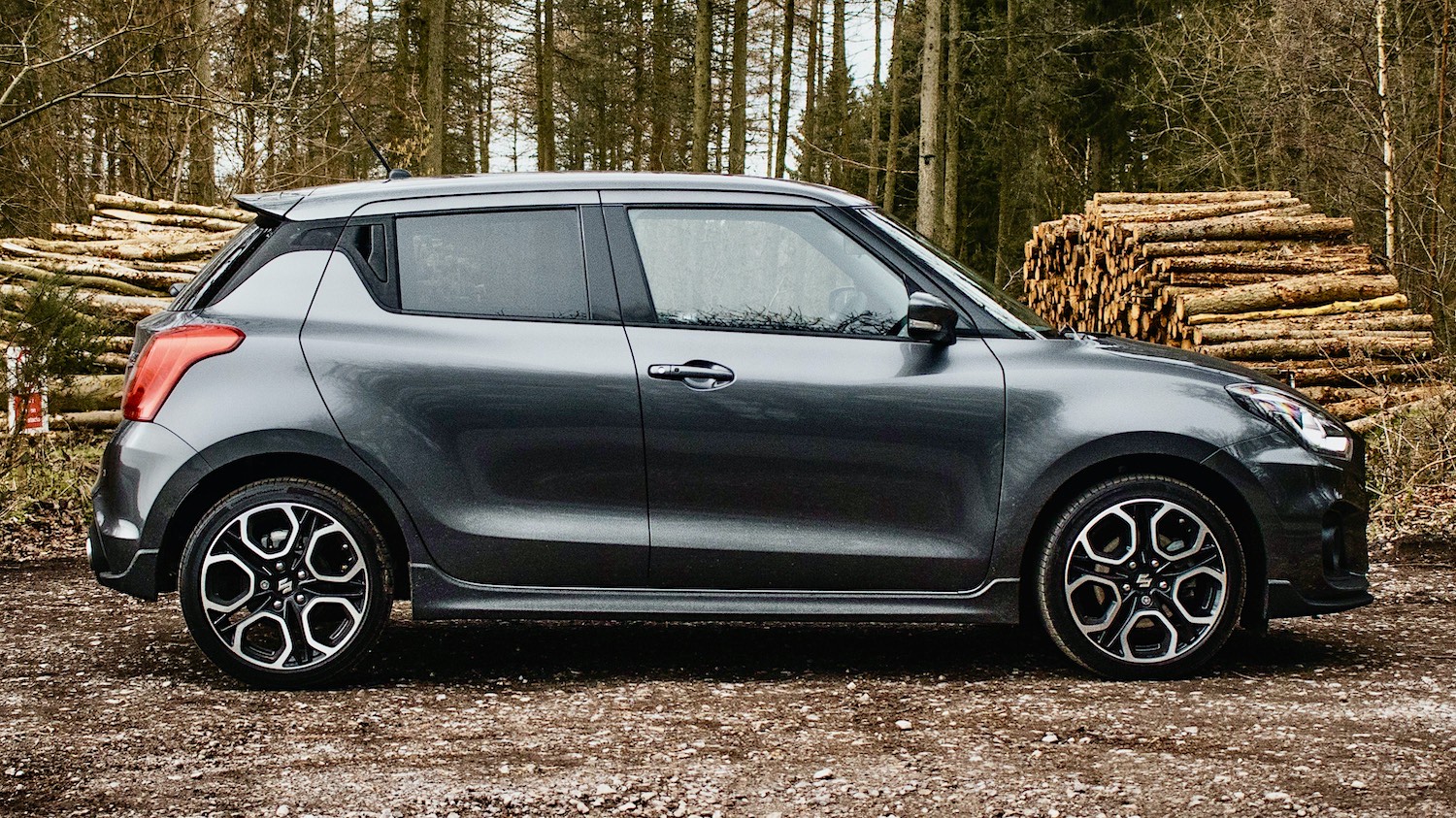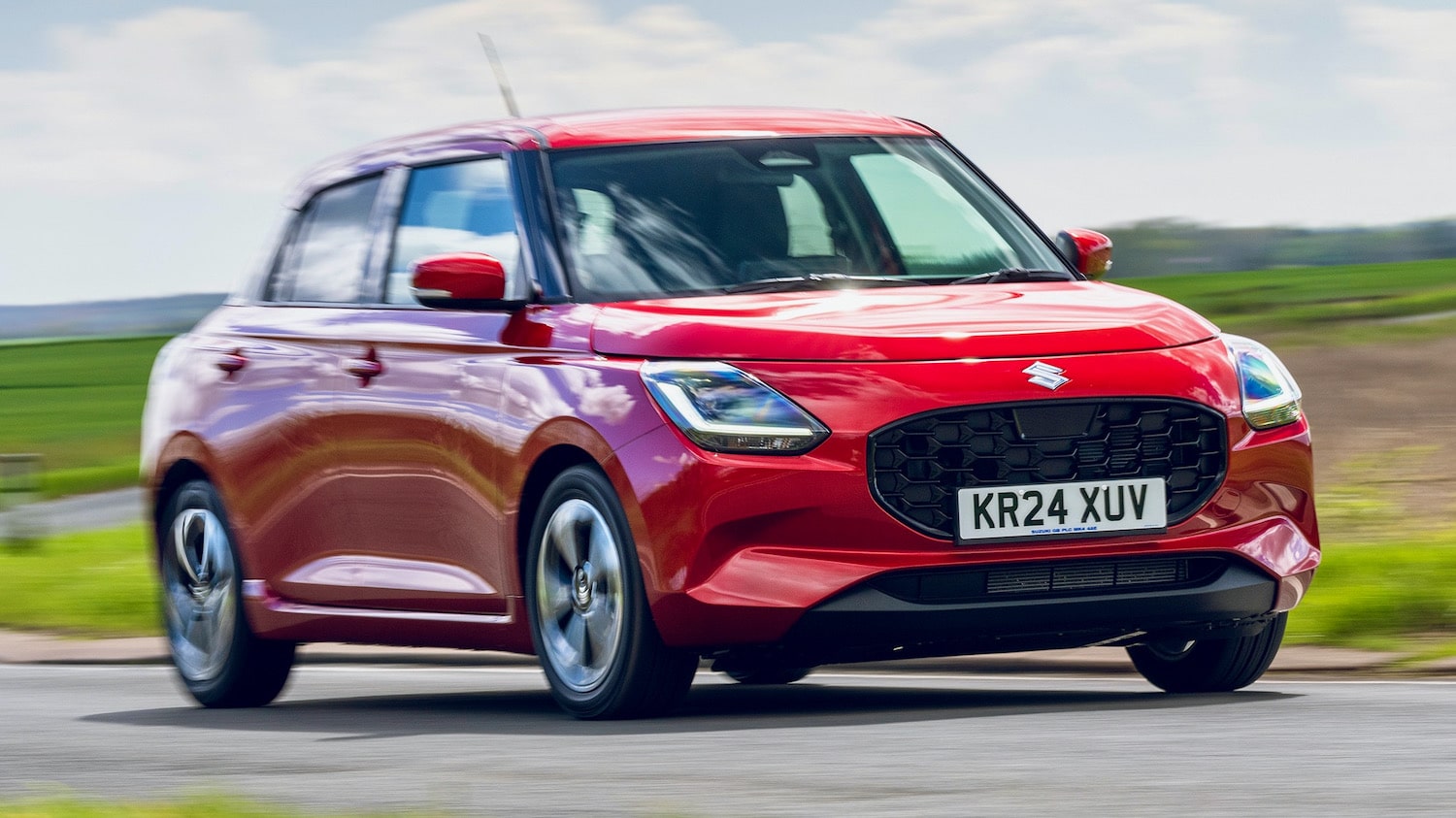I made no secret of the fact that the Suzuki Swift was my favourite small hatchback of 2020
You see, the Swift Sport is not about speed. Sure, it has a decent amount of “pep” to it and loves a good B-Road blast, but straight-line speed was never its true calling, and the handling was the best part, being wonderfully light and impressively direct. So, would the addition of an underslung battery pack and (very) mild hybrid assistance spoil this otherwise wonderful recipe?
Well, it didn’t spoil the recipe, so much as significantly change it. If the non-hybrid Swift Sport was a Meringue – light, crunchy, you get to the good bit straight away – then the new hybrid version is more of a trifle. Yes, a trifle – everything is good, but we all know the best bit is the sponge fingers at the bottom, and to get to that, you have to wait.
You may well be reading this and thinking that I’ve officially lost my marbles, comparing a “warm” hatch to a jelly-based dessert, but please, allow me to explain.
The non-hybrid version felt like it was more-or-less always in the powerband. Yes, some boost building was done, but by and large, it always seemed ready to go, ready to overtake and prepared to chuck into the next corner, and I feel like that magic is conspicuously absent in this mild-hybrid version.
The primary success recipe is unchanged – excellent styling, subtle yet aggressive body kit, twin (real) exhaust pipes, supportive seats and a lovely simple interior devoid of annoying haptic feedback buttons and touch-screen A/C controls. But the driving experience is different.
Gone is the instantaneous spirit, replaced by a sort of pseudo-turbo lag. The hybrid system is but a mere generator in this instance, giving a little extra “shove” to get the car off the line. Still, in reality, this system translates to a lag-like feeling, with the vehicle initially rolling before the turbo kicks in and shoves the car forward in the manner that we’ve become used to from the old Swift Sport.
The handling, too, is noticeably different. Of course, putting the batteries under the floor keeps the centre of gravity nice and low, which does improve the perceived road-holding abilities of the Swift Sport, but the weight is there, and it makes itself known. Neither of these changes – the driving characteristics or the mildly altered handling – is enough to be a deal-breaker, however, though there is one thing that these changes may break.
That thing, ladies and gentlemen, is your spine. The Swift Sport was always quite harshly sprung, but it suited the nature of the car well, being set up for enjoyable rather than comfortable driving. However, the addition of the batteries under the floor has changed that ride from slightly rough to uncomfortably harsh, with built-up urban areas featuring multiple speed bumps being the mortal enemy of the hybridised Swift Sport. The long, flowing speed bumps are just about passable – as are long dips in the road and undulations, which the Swift Sport soaks up very well indeed – but any sharp, sudden bumps, holes or traffic calming measures are incredibly uncomfortable, with numerous comments from my other half in the passenger seat echoing my sentiments.
In essence this updated Hybrid version, is almost exactly like the previous generation. Actually, it IS exactly like the previous generation. Suzuki knew they were onto something with the Swift Sport and did something many manufacturers could learn from – they left it well alone! The styling is the same (minus some hybrid badging), and that’s an excellent thing indeed, as are the wheels, the headlights, the exhausts… well, you get the idea.
The interior, too, is the same, though this does mean it inherits the slightly laggy touch-screen system from the previous model, which is shared across most of Suzuki’s range. That’s not a big deal here though, as this is a car to drive, not to faff with touch screens or worry about the size of the screen itself. Get in, strap in, push the start button, and have fun. The ethos is still there, clear as day, though you just have to wait a little longer to get to the fun part. I would also suggest having a chiropractor on speed dial, too.
Indeed this additional hybrid assistance is reflected in the amount of time spent at the petrol pump; I hear you ask. In my experience, I can’t say I noticed any real difference. While there may be an extra MPG here-and-there in the real world, the tiny tank on the Swift made itself known just as much as usual, though it wasn’t designed to be a long-distance GT car, so this is somewhat of a moot point.
Would I suggest getting the newest, latest, flashiest version of the Swift Sport? Yes, I would. Despite its flaws, it’s still totally entertaining, excellent to look at and has the innate ability to put a smile on your face whenever you’re behind the wheel – just as a fun hatchback should do. If you’re used to harsh-riding cars, the Swift is still an absolute joy in every way. Still, if you have the non-hybrid version of the current model, I might suggest you simply keep enjoying it precisely as it is, since the changes are not worth the additional cost or rougher ride.
The tell-tale sign of whether a journalist enjoyed a car or not is always the handover. Did I want to give the keys back? No, I didn’t, and that should say it all.
Author Rating: 3.5/5
The basic recipe is unchanged, but the additional batteries destroy the ride quality and add weight which goes against the Swift’sSwift’s light, flowing characteristics.

Kieran Bicknell
Motoring writer
Kieran Bicknell offers his fresh take on car reviews by making the most of his dynamic, yet detailed approach to writing. Having graduated from university with a BA (Hons) in Photography and spending a number of years as a freelance automotive photographer. Kieran is now putting his knowledge and writing skills to use, with the ability to supply both written articles and imagery. Kieran feels at home in anything from small superminis to the latest SUVs, and relishes the opportunity to drive, photograph and write about anything with four wheels.
What the others say on YouTube
A selection of the latest video reviews of this car….Just click to watch on this page.
Recent Reviews
The latest cars, suvs and crossovers reviewed by our experienced journalists.
The All-New Suzuki Swift Hybrid is Not an SUV
People want SUVs, but the small car market still has many fans Car Reviewed: All-New Suzuki Swift 1.2 Mild Hybrid Ultra The Ford Fiesta, Nissan Micra and Kia Rio have now disappeared from sale. With this in mind, Suzuki has revamped its Swift Hybrid, and as a large manufacturer that still sells small cars, it…
Continue Reading The All-New Suzuki Swift Hybrid is Not an SUV
Suzuki Swift Sport Hybrid, a sensible package
‘Swift’: yes. ‘Sport’: yes. No better words than these for this most enjoyable small hatchback Car Reviewed: Suzuki Swift 1.4 Hybrid Sport Suzuki once again provides a very reasonably-priced car that offers plenty of driving entertainment along with a sensible package of small car versatility. Our test model was the 1.4 Boosterjet hybrid (all Suzukis…
Continue Reading Suzuki Swift Sport Hybrid, a sensible package
Suzuki Across 2.5 PHEV, rapid and spacious
Suzuki’s plug-in hybrid SUV costs twice as much as their next-most-expensive model Car Reviewed: Suzuki Across 2.5 PHEV E-4 E-CVT Eyebrows might rise at the thought of £46,629 for a Suzuki, but this model uses joint technologies in a sharing collaboration with Toyota and the RAV4. What is the collaboration between Toyota and Suzuki?Suzuki and…














